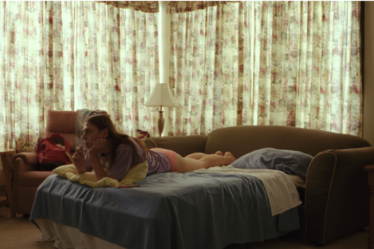

Opening in wide release around the country is the highly anticipated feature documentary based on Pulitzer prize winner Ron Suskind’s book Life, Animated: A Story of Sidekicks, Heroes, and Autism. If you haven’t heard about this bestseller, it recounts the Suskind family’s experience with their younger son Owen’s autism, and their discovery of how to reach into and expand his world through his affinity with Disney movies.
The movie inspired by Ron Suskind’s book, Life, Animated, garnered the Special Jury Prize, a Best Director Award, and a nearly 10 minute standing ovation at Sundance this year. It is particularly pedigreed, given its director Roger Ross Williams is the first African-American director to win a Oscar, in 2010, for best documentary short subject with the film Music by Prudence. Life, Animated also got complete approval by Disney to use whatever they needed without editorial control, a rarity with the company. Those who see it as simply promotion for Disney are missing the point. Through the Suskind’s discoveries, what they first named ‘Disney Therapy’ has been expanded to include all sorts of subjects. Now called ‘Affinity Therapy’, this technique has become studied and utilized by a growing group of psychologists, parents, and educators around the world. What do you say about a documentary that is part of creating a whole new way of unlocking the worlds of people who otherwise might have always been trapped without any communication with those around them?
When Owen Suskind was around three years old, he went inside himself and stopped speaking completely. His parents had no idea what happened, but they knew they had to help him emerge from his isolation. In his retreat,
he spent many hours repeatedly watching Disney feature films. They began seeing Owen mouthing the words spoken onscreen. When he speaks out loud the words he has heard onscreen, a door to communication opens for Owen and his family. Through a series of interactions and discoveries that spanned years of trial and error, disappointments and victories, and a lot of love and hard work, they unlocked a way to communicate through the stories and characters in Owen’s beloved Disney films.
This movie, however, is not a commercial for the studio. It’s really about the power of leveraging the passionate interests of those on the autism spectrum, now called affinity therapy, as a way into learning, expanded thinking, and connectivity. (Click here to read my interview with director Williams and Suskind family)
Williams chose not to simply create a film of Ron Suskind’s best-selling book, but rather expand upon it at a pivotal moment of transition in Owen Suskind’s life. While the audience is shown some family history, and the years of struggles they experienced in helping their son develop into an independent, largely self-directed adult, the focus is on how Owen experiences life in his 20s, as he navigates relationships, work, and moving away from his family. The way Williams pivots back and forth between Owen’s childhood and the now exposes the ongoing challenges of Owen’s life with Autism in a way that ultimately achieves his larger goal of fostering understanding and compassion.
One of the most powerful tools, and most compelling aspects of the movie, is the animated sequences Williams believed were an essential part of the storytelling. They were created in 2D by the owner of the French animation studio Mac Guff, Phillipe Sonrier, and his hand picked animators. Artist Olivier Lescot, in particular, is responsible for the look of the animated sequences. In fact, Williams and the Mac Guff crew began to call these sequences “Olivier style”. Williams also used, at the suggestion of prolific animation producer Emily Hubley, all music and no dialogue in those parts of the film. Electronic musician Dylan Stark created the music by incorporating recordings of VHS tapes fast-forwarding and rewinding and Owen’s self-talking into the soundscape.
Also fascinating, is what this film inadvertently says about the power of fan art. Owen creates quite a lot of it in his attempt to work out his feelings, and express what is locked inside himself. At many points in his life, creating these images often literally expressed how he felt when he could find no other way to say it. In a very real way, Life, Animated not only celebrates the art of 2-D animation, it also shows the value and importance of visual self expression for anyone searching or yearning for connectivity.
A



